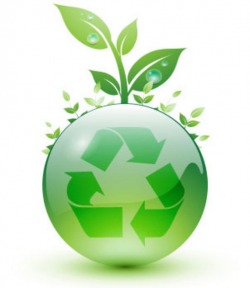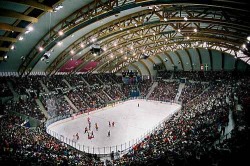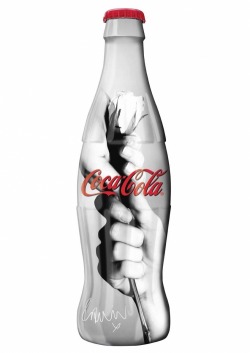Green

Norway has been long characterized by their initiative in environmental awareness. The 2022 Olympics will assuredly be included in this. Norway’s personality of “being green” stems deeply into environmental acts and the Lillehammer Olympics of 1994. Because of this, Norway urges the world to take part in its plans to unify the world and vamp the 2022 Olympics to it’s greenest potential.
Norway has a head start with focused and intricate plans for the 2022 Olympics due to its spirited aggression on molding the 1994 winter games, held in Lillehammer. The idea is logical due to having previous experience in hosting the Olympics in an ecofriendly manner. The 1994 Olympics were the first to take green intiative (Kalosh 1994). Norway holds a general understanding of the necessary means to achieve the goal, and a thorough already constructed layout of how Norway will alter Oslo to better benefit Norway, the athletes, prospectors, and by a ripple effect, the world. According to Kalosh’s article Greening the Olympics (1994), Norway took five key steps to revolutionizing the Olympics in 1994,
I.Build arenas where nature can tolerate them best and, whenever possible, where they harmonize with the surrounding topography and cultural landscape. In a break with Olympic tradition, very few of the structures are monumental. Heavy emphasis is on their suitability for post-Olympic use.
II. Encourage companies to use Norwegian expertise in solving technical challenges, and to highlight Norwegian traditions and historic images in architectural design. Incorporate time-honored materials like stone and wood as often as possible.
III. Focus on energy-efficiency in heating and cooling systems.
IV. Develop a recycling program for the entire Winter Games region.
Oslo plans to utilize many of the effective ideas from the ’94 Olympics as well as continually readjusting to better create an eco-friendly environment. The following will be a detailed explanation tangible steps the Olympic Committee will take.
Norway has a head start with focused and intricate plans for the 2022 Olympics due to its spirited aggression on molding the 1994 winter games, held in Lillehammer. The idea is logical due to having previous experience in hosting the Olympics in an ecofriendly manner. The 1994 Olympics were the first to take green intiative (Kalosh 1994). Norway holds a general understanding of the necessary means to achieve the goal, and a thorough already constructed layout of how Norway will alter Oslo to better benefit Norway, the athletes, prospectors, and by a ripple effect, the world. According to Kalosh’s article Greening the Olympics (1994), Norway took five key steps to revolutionizing the Olympics in 1994,
I.Build arenas where nature can tolerate them best and, whenever possible, where they harmonize with the surrounding topography and cultural landscape. In a break with Olympic tradition, very few of the structures are monumental. Heavy emphasis is on their suitability for post-Olympic use.
II. Encourage companies to use Norwegian expertise in solving technical challenges, and to highlight Norwegian traditions and historic images in architectural design. Incorporate time-honored materials like stone and wood as often as possible.
III. Focus on energy-efficiency in heating and cooling systems.
IV. Develop a recycling program for the entire Winter Games region.
Oslo plans to utilize many of the effective ideas from the ’94 Olympics as well as continually readjusting to better create an eco-friendly environment. The following will be a detailed explanation tangible steps the Olympic Committee will take.

Haakons Hall- a model for Oslo
The first item of question is the arena the Olympic games will be held in. It will be necessary to build many infrastructures, however Oslo plans to adopt Lillehammer’s ideas to make the buildings as green and reusable as possible. The TED Case Study of the Lillehammer Olympics (1997) looks in-depth at the measures the Lillehammer Olympics committee took, in summary; the arenas were constructed using primarily local materials with strict energy conserving measures. The picture to the left is of Haakans Hall- the main location for the Lillehammer Olympic Ice Hockey games (Riding 1993). There was a strong emphasis on post-Olympic uss. Many of the materials were constructed in order so they may be removed after the Olympics and used in dorms or retirement homes. Some buildings are multi purpose and can later serve as concert halls, a fire station, golf-driving range or soccer fields in the future. Still other buildings, like the media center, can be turned into a regional college once the games end (TED Case Study 1997).

The next item at hand in order to make the 2022 Olympics drip with green is recycling. Norway plans to partner with Coca-Cola to continue Coca-Cola’s Zero waste, carbon neutral sponsorship with the Olympics. In the 2010 Vancouver Olympics Coca-cola jumpstarted their dream by proudly displaying recycling in every aspect of their sponsorship; every cooler (nearly 1,500) used eKOfresh technology, nearly eliminating direct greenhouse gas emissions and reducing indirect emissions, all bottles, cups, utensils, plates, menu boards, hand outs were recyclable, and all staff uniforms-everything but underwear and shoes-were made of recycled bottles (Zmuda 2010).
Norway plans to implement these ideas and take recycling to the next level. The world today is highly concerned about sustainability and Norway feels the Olympics can give each person an opportunity to get involved as well as enjoy the games. Norway plans to re-use or compost 80% of all trash generated at the Olympics, this is an additional 10% from the 1994 Olympics (TED Case Study 1997). By incorporating recycling into every aspect of advertisement of the Olympics, urging athletes, teams, coaches and countries to make vows of recycling, and implementing ideas mentioned above, Norway hopes to spark an interest of recycling that not only creates a greener Olympics, but a movement for a greener earth.
Norway plans to implement these ideas and take recycling to the next level. The world today is highly concerned about sustainability and Norway feels the Olympics can give each person an opportunity to get involved as well as enjoy the games. Norway plans to re-use or compost 80% of all trash generated at the Olympics, this is an additional 10% from the 1994 Olympics (TED Case Study 1997). By incorporating recycling into every aspect of advertisement of the Olympics, urging athletes, teams, coaches and countries to make vows of recycling, and implementing ideas mentioned above, Norway hopes to spark an interest of recycling that not only creates a greener Olympics, but a movement for a greener earth.
